Benjamin Hubert and Airbus elevate the short haul flight experience with smart seating
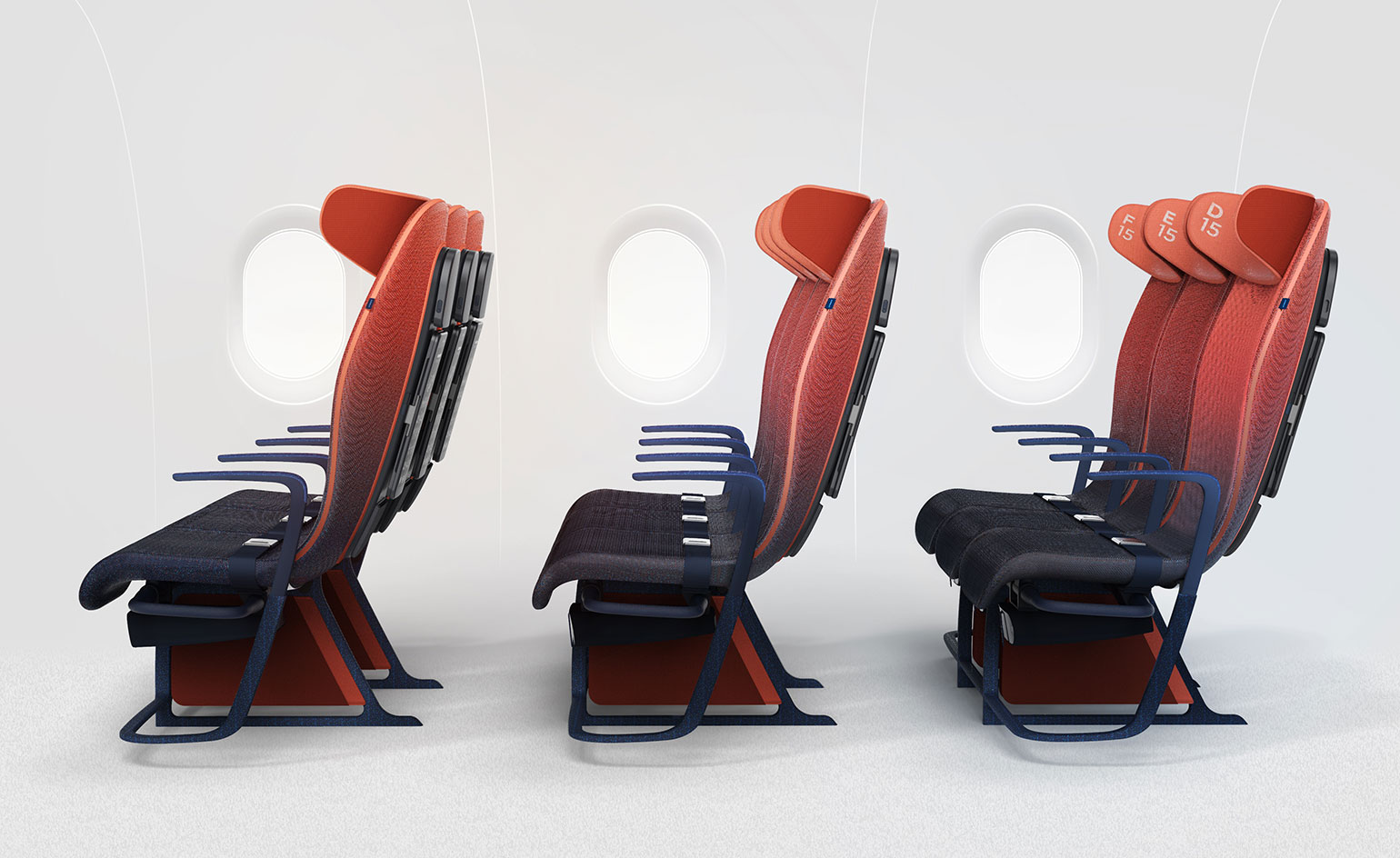
The airline seat is a perennial design challenge. Shaped and dictated by economics and regulations, a seat has to seduce the passenger without making a dent in the operator’s profit or loss.
Designer Benjamin Hubert, the founder of Hackney-based multi-disciplinary studio Layer, has taken up the challenge of passenger comfort in collaboration with Airbus. Their new conceptual ‘Move’ project is based around the application of ‘smart textiles’, fabrics embedded with sensors that continually monitor passenger movement and temperature. Knitted textures make a welcome departure from regulation fabrics, while the lightweight structure allows for more space for elbows and knees.
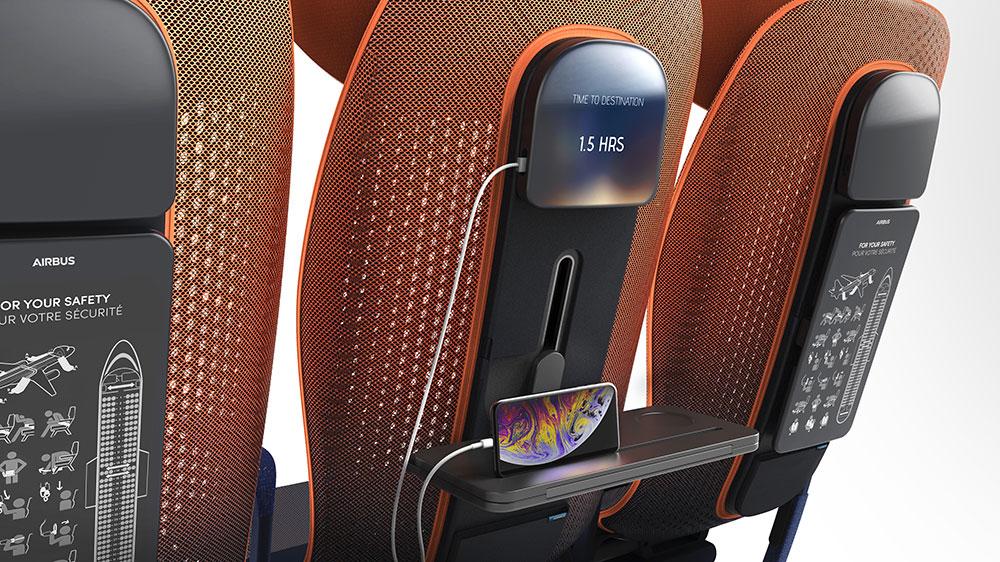
Image shown with the consent of Airbus
Working in conjunction with a personal app, the Move system is first and foremost about promoting healthy flying, with alerts that suggest a spot of in-seat exercise or a quick turn around the cabin might be in order. This interactive approach is paired with a fixed seat position; the tension and feel of which can be altered, while comfort is maintained by the targeted suggestions about the best way to sit.
This app-driven fidget fest is not pitched at long-haul travellers, but instead intended to improve the experience for cramped, low-budget short haul trips – where margins are everything and space is at a perpetual premium. Better for health, better for the environment, thanks to the weight-saving of the knitted seat structure, and also better for cabin ambience, with more choices of colours and textures.
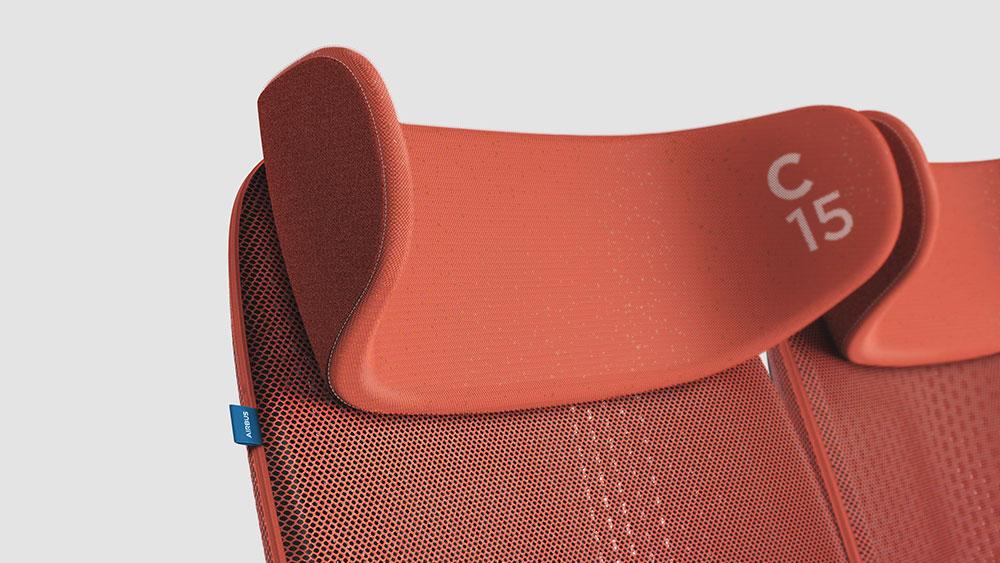
Image shown with the consent of Airbus
Move also allows seats and seat-backs to be configured before the flight, with more stowage space than regular seating and more flexibility of use, from in-flight entertainment systems to a small desk, along with all the connections needed to bring your own devices. Armrests can also be folded away to turn a block of seats into a friendly bench for families or couples.
Innovation rarely reaches the world of the economy class cabin and Layer hopes that this collaboration with Airbus will make flying more enjoyable as well as way more energy efficient. 18 months in the planning, the system neatly dovetails lightweight and intelligent materials research – smart textiles, aluminium and carbon fibre – with contemporary preoccupations with monitoring our health, creating a holistic system that Hubert hopes will benefit everyone.
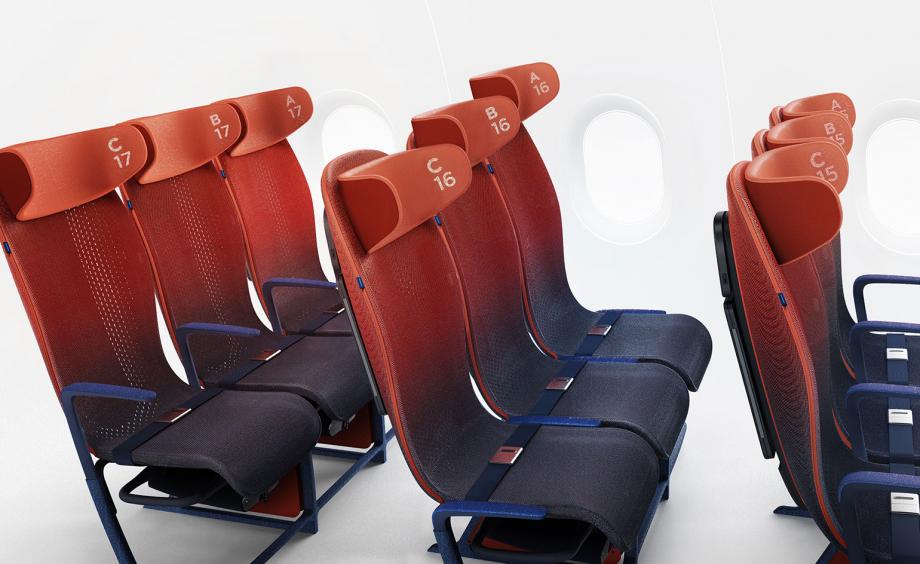
Move features ‘smart textiles’, fabrics embedded with sensors that continually monitor passenger movement and temperature. Image shown with the consent of Airbus.
INFORMATION
For more information, visit the Layer
Receive our daily digest of inspiration, escapism and design stories from around the world direct to your inbox.
Jonathan Bell has written for Wallpaper* magazine since 1999, covering everything from architecture and transport design to books, tech and graphic design. He is now the magazine’s Transport and Technology Editor. Jonathan has written and edited 15 books, including Concept Car Design, 21st Century House, and The New Modern House. He is also the host of Wallpaper’s first podcast.
-
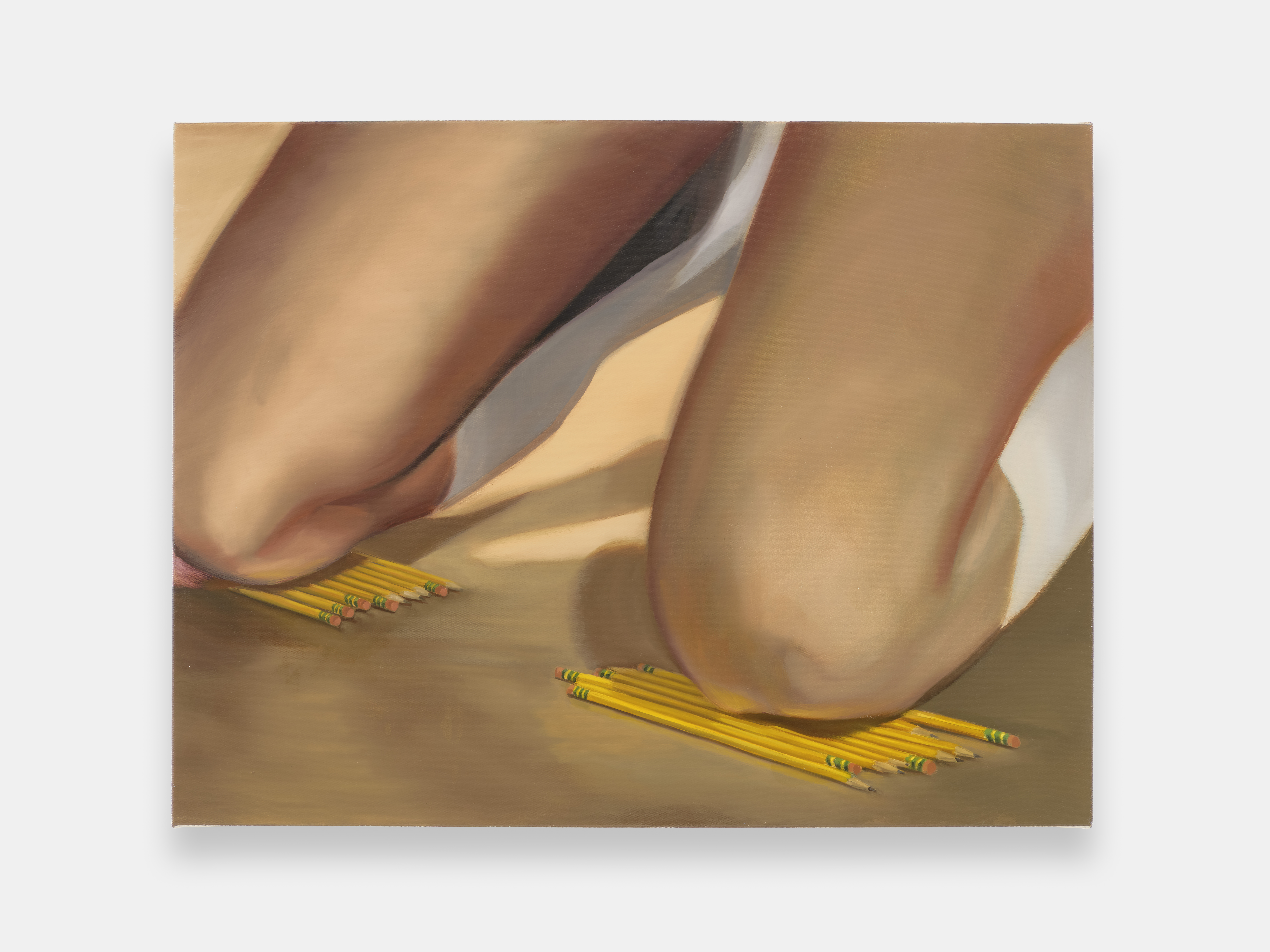 ‘I want to bring anxiety to the surface': Shannon Cartier Lucy on her unsettling works
‘I want to bring anxiety to the surface': Shannon Cartier Lucy on her unsettling worksIn an exhibition at Soft Opening, London, Shannon Cartier Lucy revisits childhood memories
-
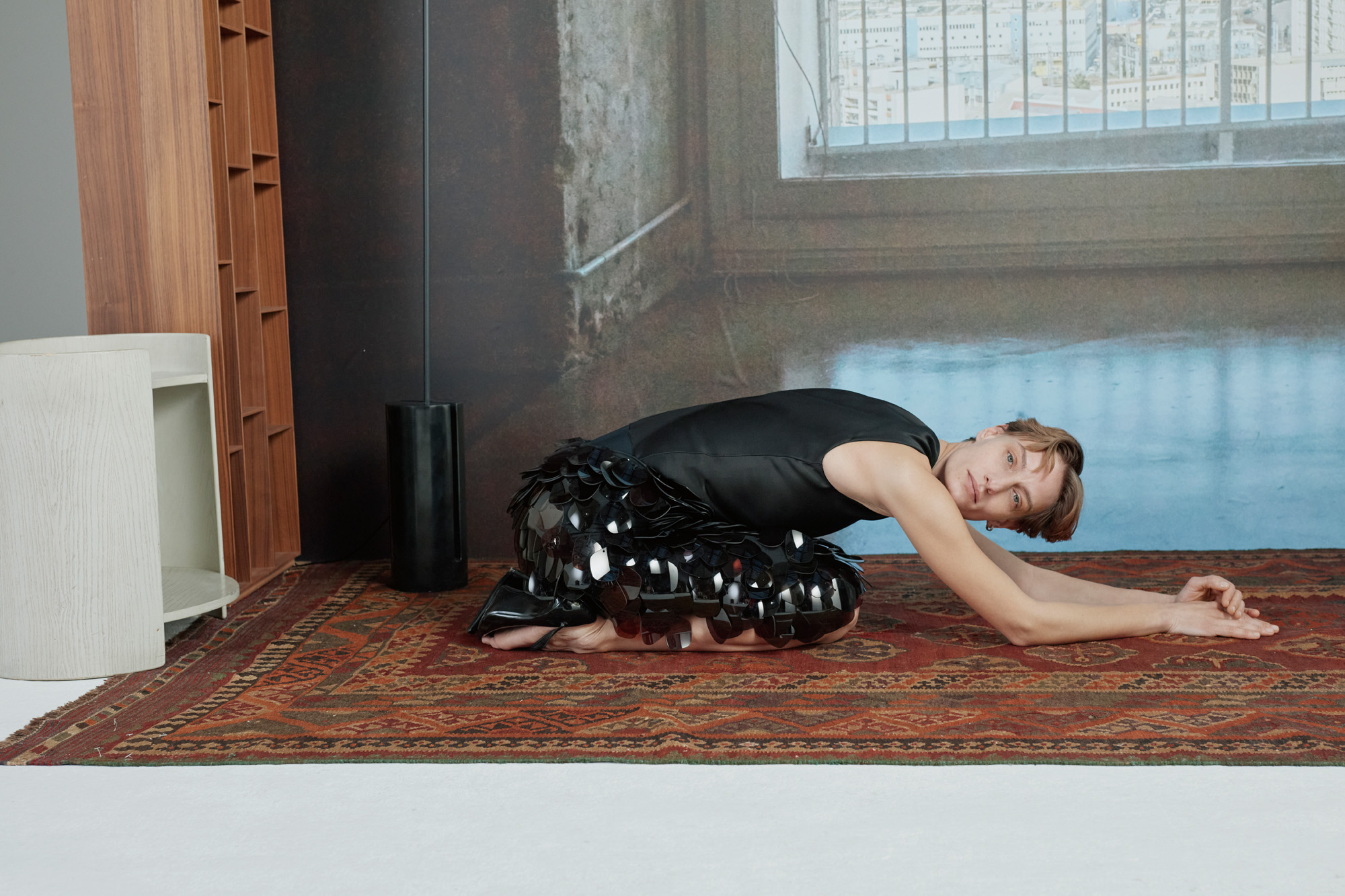 What one writer learnt in 2025 through exploring the ‘intimate, familiar’ wardrobes of ten friends
What one writer learnt in 2025 through exploring the ‘intimate, familiar’ wardrobes of ten friendsInspired by artist Sophie Calle, Colleen Kelsey’s ‘Wearing It Out’ sees the writer ask ten friends to tell the stories behind their most precious garments – from a wedding dress ordered on a whim to a pair of Prada Mary Janes
-
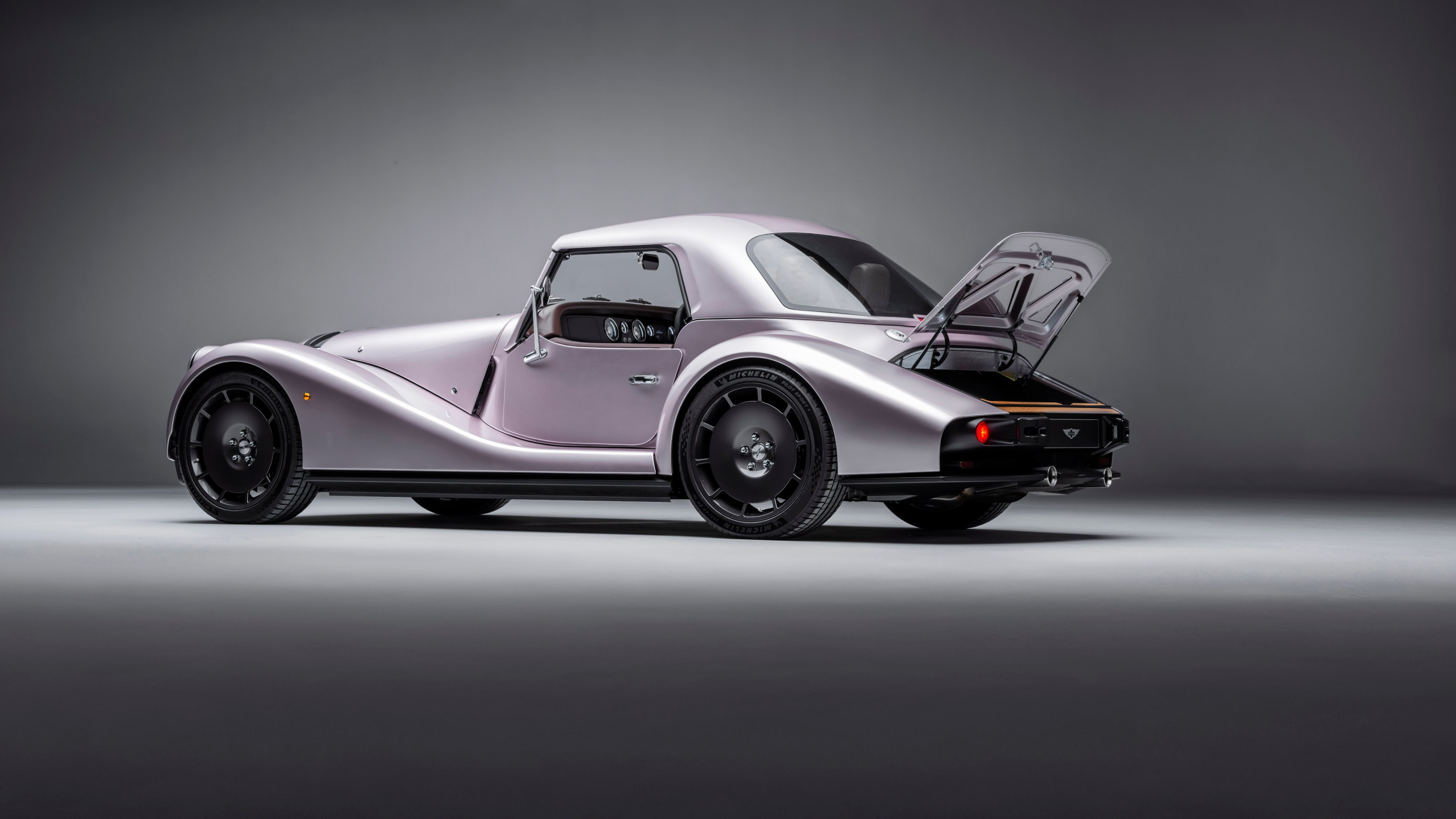 Year in review: 2025’s top ten cars chosen by transport editor Jonathan Bell
Year in review: 2025’s top ten cars chosen by transport editor Jonathan BellWhat were our chosen conveyances in 2025? These ten cars impressed, either through their look and feel, style, sophistication or all-round practicality